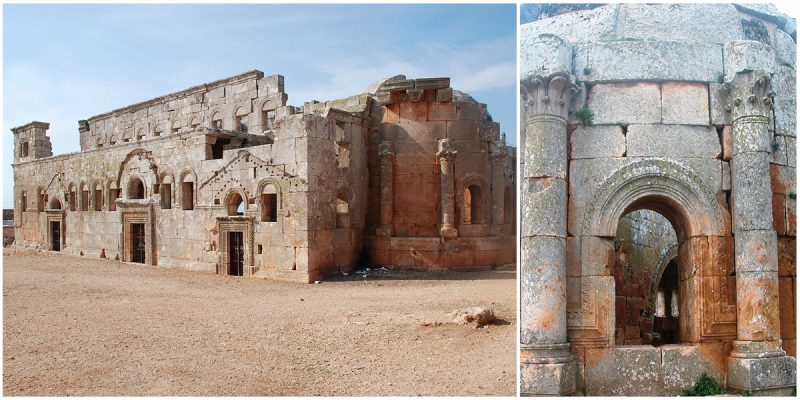Qalb Loze, or “the Heart of the Almond,” is a Druze village in Syria located between Antioch and Aleppo. It is situated near the border with Turkey and is part of an area known as the “Dead Cities.” The village is well-noted for its large fifth-century stone church and other Byzantine-era ruins.
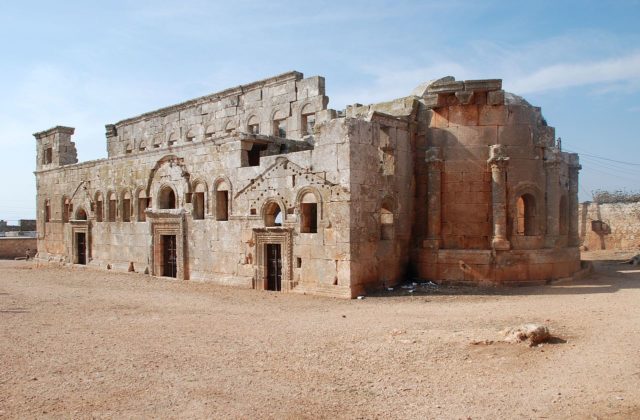
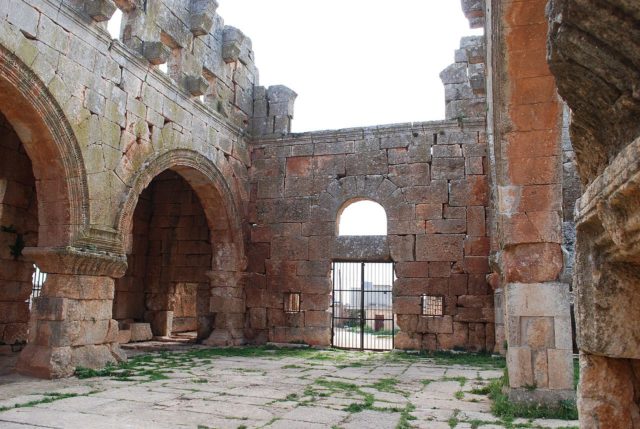
It is believed that the church was built during the lifetime of St. Simeon or right after his death.
Unfortunately, none of the preserved inscriptions at the church show by whom it was founded, but since the local workmen responsible for the sculptural decoration seem to have been assisted by master masons from Antioch, it is tempting to assume that the initiative came from the city.
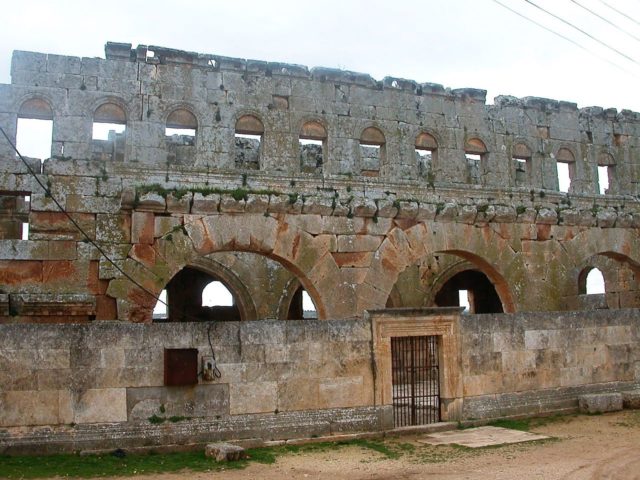
Typologically, the church belongs to a special Syrian derivation of the standard-basilica, the so-called Weitarkadenbasilika, where the columns that in traditional Byzantine church architecture separate the aisles from the nave have been replaced with low piers and soaring arches that create the feeling of expanded space.
It is a design which can be regarded as a first step towards placing two bell towers at the sides of the entrance.
The towers housed steps which gave access to galleries from which believers could attend ceremonies when the church was full.
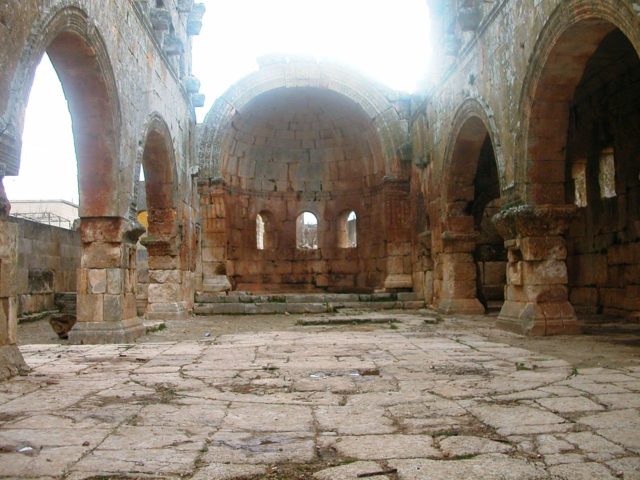
The whole construction is based on the Roman construction technique, use of concrete and reduction of the ceiling weight, which was achieved in various ways, including leaving a large opening at the center of the vault similar to the Pantheon of Rome.
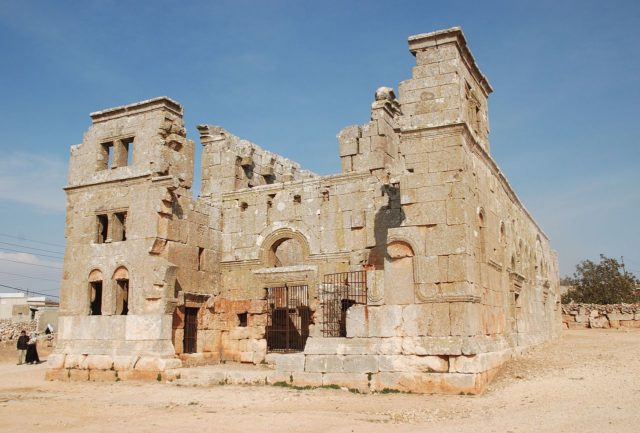
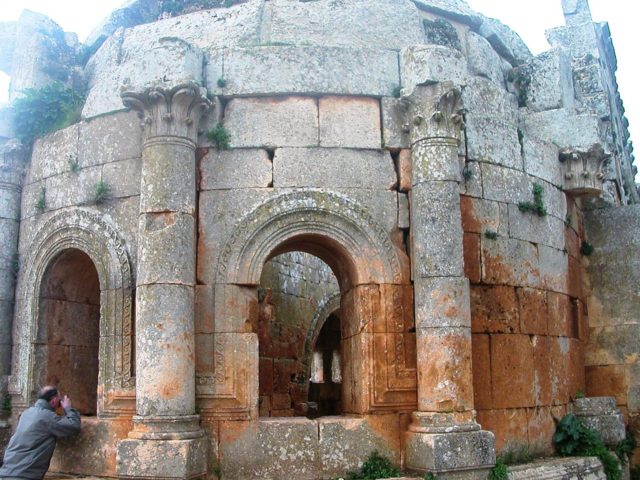
The church is also similar in architectural style and craftsmanship to the large pre-Islamic Syrian churches in El Anderin, Kerratin, Turmanin and Ruweha, which may have been built by the same workshops or guilds.
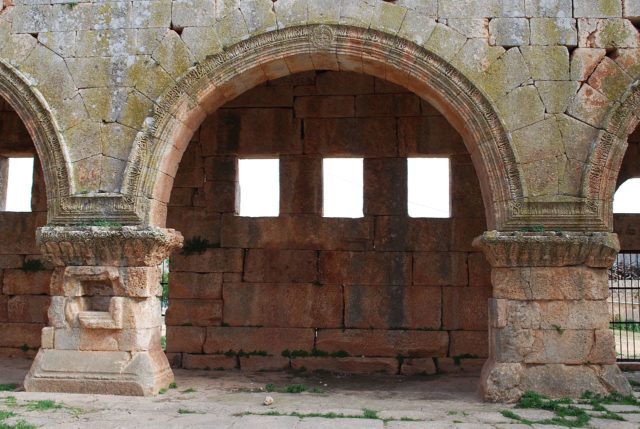
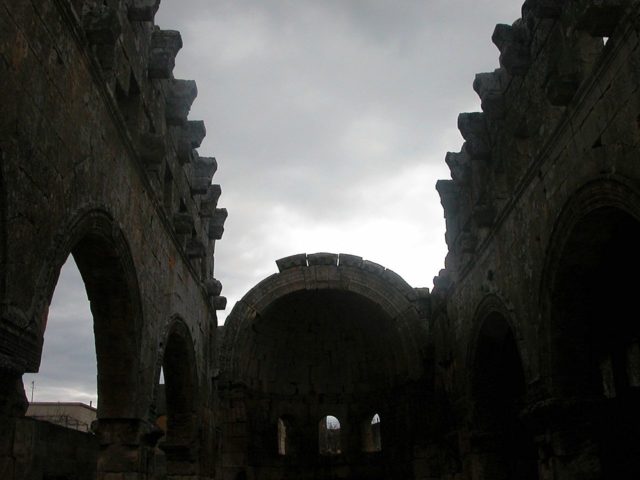
Qalb Loze was inscribed by UNESCO as a World Heritage Site in 2011 as a part of the “Ancient Villages of Northern Syria” listing. The church is one of the best-preserved churches of this period in the region.
